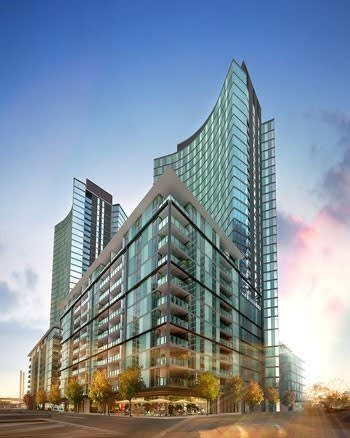Residential buildings shoot for the (green) stars

As we look to what's ahead for 2012, Property Observer is republishing some of our most noteworthy stories of 2011.
The first residential project in Australia to achieve five stars is not the eco-mansion you might imagine.

These stars – which have only been available to multi-residential projects since 2008 – were awarded to the Lilyfield Housing Development in Sydney’s inner-west (pictured above).
The social housing complex, which includes 88 one-, two- and three-bedroom units, achieved its status thanks to a significant investment in eco-initiatives aimed largely at keeping costs down for tenants.
Romilly Madew, CEO of the Green Building Council of Australia, explains: “Take Lilyfield’s gas-booted hot water system as an example. It caters for 60% of hot water consumption and will be able to deliver annual savings of $213 per unit, meaning the annual energy bill for households will decrease by 25%.
“Green buildings really do provide tenants and owners with a buffer against future increases in water and energy costs and protect against service shortages.
“Highly efficient appliances, increased insulation, reduced lighting loads, passive solar energy and ventilation, and water conservation measures all lead to more dollars in the bank,” she says.

Housing NSW has since achieved another five-star ratings for the redevelopment of its Redfern site (pictured above), which will include 66 apartments and 40 townhouses, many of which will house aged and disabled members of the community.
According to a department spokesperson, raising the environmental bar also lifts the wellbeing of residents.
“Assisting low-income and disadvantaged households with the reduction of energy and resource consumption has clear economic benefits, but it also improves their health, not to mention comfort levels at home,” the spokesperson says.
“For example, residents enjoy houses that are naturally ventilated, and because there is no general parking they are encouraged to use bikes.”
Housing NSW is committed by its own regulations to adopt voluntary green rating tools to a five- or six-star standard when building new projects.
As such, it is able to lead the way not only for social housing but for sustainable residential design in general.
Madew says that although the green star system is designed to be voluntary as a means of recognising and rewarding those who push the envelope, she encourages governments to mandate green star ratings for all the buildings they own, operate or develop.
“This is important as it demonstrates governments’ commitment and leadership and will help to drive ever-increasing levels of sustainability.”
The immediate challenge for the private sector is meeting the perceived higher construction costs associated with green star projects, and having confidence this will lead to solid returns.
But architect Kevin Masci of Bates Smart says a green-star rating can be a real marketing edge.

At Convesso (pictured above), the stunning development on Melbourne’s Victoria Harbour with four green stars, Masci says any additional costs were offset against “less important building elements” to ensure only minimal costs were passed on to buyers.
“Despite the sustainability credentials, Convesso apartments are not necessarily more expensive than similar apartments in the Docklands, they are still market competitive,” he says.
“At the moment buyers embrace green star features, providing it’s at a reasonable cost, but in time green star residential buildings will be recognised as the new state-of-the-art.”
Convesso, with its soaring twin towers, penthouses, pool and gym, is just one example of how buyers can be reassured that neither creature comforts nor aesthetics are sacrificed in the name of a green star rating.

The design of The Summer (pictured above), a four-star green development along South Beach Promenade in Fremantle, was in fact inspired by an understanding and respect for the environment.
“Perth weather can often be extreme, with strong sun, heavy rain and wild wind, which made it more sensible to employ a passive design that responds to the benefits and forces that characterise the climate,” says architect Daniel Grinceri of Donaldson Warn.
“Sustainability was an important design principle that informed the early concept stage and therefore influenced the aesthetic direction of The Summer”.
Romilly Madew admits that take up of green star residential projects has been slow to start.
“But as the business case grows, we expect the uptake of the residential tool to follow the trajectory of the Green Star office tool.”

And if Grocon’s Delta building (pictured above) – a 10-storey apartment complex made completely from timber – is anything to go by, we have a lot to look forward to.
Delta aims to be carbon-neutral and is due for completion on its inner-Melbourne site in 2014.